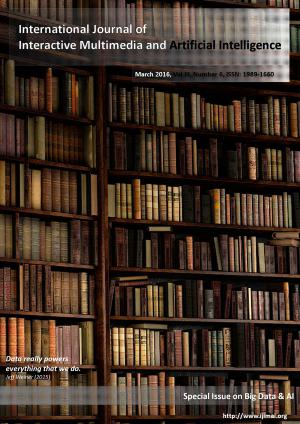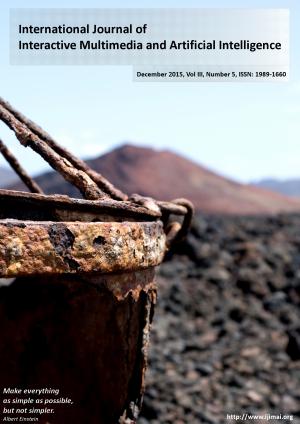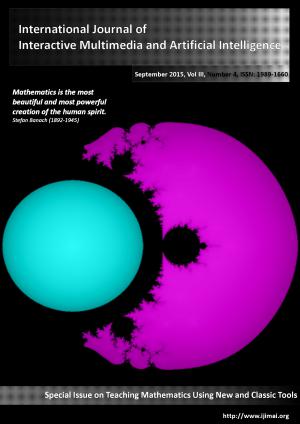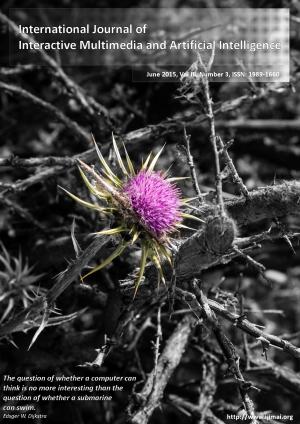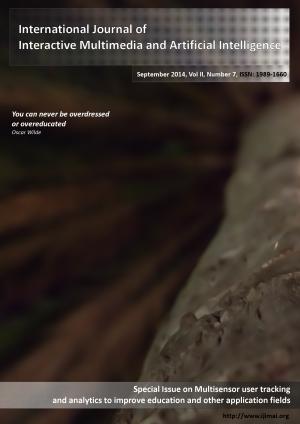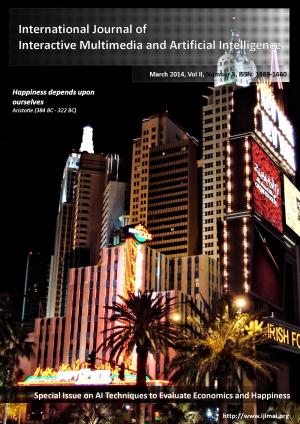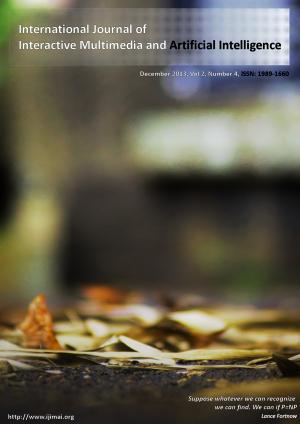The research works presented in this issue are based on various topics of interest, among which are included: 3D image reconstruction, Persian texts, usability evaluation methods, user experience, oriented matroids, flexible job-shop scheduling, business and social behavior, mobile computing and mobile devices, intelligent tutoring systems and geography optimization.
Pacheco et al. present a novel hybrid methodology, composed by 10 phases that combine active and passive methods, using images and a laser in order to supplement the missing information and obtain better results in the 3D object reconstruction. The proposed methodology proved its efficiency in two complex topological complex objects.
Noferesti, S. and Shamsfard M., write about Persian Texts and the Ezafe construction. They introduce a framework for combining genetic algorithms with rule-based models. This framework was used for recognizing the position of Ezafe constructions in Persian written texts. At the first stage, the rule-based model was applied to tag some tokens of an input sentence. Then, in the second stage, the search capabilities of the genetic algorithm were used to assign the Ezafe tag to untagged tokens using the previously captured training information. The proposed framework was evaluated on Peykareh corpus and it achieved 95.26 percent accuracy. Test results show that this proposed approach outperformed other approaches for recognizing the position of Ezafe constructions.
Schön, E.M. et al. describe a procedure to analyze and optimize scientific Internet information services that can be accomplished with relatively low effort. It consists of a combination of methods that already have been successfully applied to practice: Human beings, usability inspections, Online Questionnaire, Kano model and Web Analytics [3].
José Antonio Valero Medina and Ivan Lizarazo Salcedo describe the implementation of a prototype REST service for triangulation of point sets collected by mobile GPS receivers. The first objective of their work is to test functionalities of an application, which exploits mobile devices’ capabilities to get data associated with their spatial location. A triangulation of a set of points provides a mechanism through which it is possible to produce an accurate representation of spatial data. Such triangulation may be used for representing surfaces by Triangulated Irregular Networks (TINs), and for decomposing complex two-dimensional spatial objects into simpler geometries. The second objective is to promote the use of oriented matroids for finding alternative solutions to spatial data processing and analysis tasks. This study focused on the particular case of the calculation of triangulations based on oriented matroids. The prototype described used a wrapper to integrate and expose several tools previously implemented in C++.
Celia Gutiérrez proposes a work based on an algorithm where each objective (resource allocation, start-time assignment) is solved by a genetic algorithm (GA) that optimizes a particular fitness function, and enhances the results by the execution of a set of heuristics that evaluate and repair each scheduling constraint on each operation. The flexible Job-shop Scheduling Problem (fJSP) considers the execution of jobs by a set of candidate resources while satisfying time and technological constraints. The aim of this work is to analyze the impact of some algorithmic features of the overlap constraint heuristics, in order to achieve the objectives at a highest degree. To demonstrate the efficiency of this approach, experimentation has been performed and compared with similar cases, tuning the GA parameters correctly.
Zouhair et al. present a work in the field of Intelligent Tutoring System (ITS), in fact, there is still the problem of knowing how to ensure an individualized and continuous learners follow-up during learning process, indeed among the numerous methods proposed, very few systems concentrate on a real time learners follow-up. This research develops the design and implementation of a Multi-Agents System Based on Dynamic Case Based Reasoning which can initiate learning and provide an individualized follow-up of learner. This approach involves the use of Dynamic Case Based Reasoning to retrieve the past experiences that are similar to the learner’s traces (traces in progress), and the use of Multi-Agents System. Through monitoring, comparing and analyzing learner traces, the system keeps a constant intelligent watch on the platform, and therefore, it detects the difficulties hindering progress and avoids possible dropping out. The system can support any learning subject. To help and guide the learner, the system is equipped with combined virtual and human tutor [6].
Sati, M. et al. outline a solution about a fault-tolerant mobile computing model based on scalable replica. The most frequent challenge faced by mobile user is stay connected with online data, while disconnected or poorly connected store the replica of critical data. Nomadic users require replication to store copies of critical data on their mobile machines. Existing replication services do not provide all classes of mobile users with the capabilities they require, which includes: the ability for direct synchronization between any two replicas, support for large numbers of replicas, and detailed control over what files reside on their local (mobile) replica. Existing peer-to-peer solutions would enable direct communication, but suffers from dramatic scaling problems in the number of replicas, limiting the number of overall users and impacting performance. Roam is a replication system designed to satisfy the requirements of the mobile user. Roam is based on the Ward Model, replication architecture for mobile environments. Using the Ward Model and new distributed algorithms, Roam provides a scalable replication solution for the mobile user. They describe the motivation, design, and implementation of Roam and report its performance. Replication is extremely important in mobile environments because nomadic users require local copies of important data.
Bhaskar, V.S. et al., describe the work to elaborate swarm intelligence for business intelligence decision making and the business rules management improvement. Their paper introduces the decision making model which is based on the application of Artificial Neural Networks (ANNs) and Particle Swarm Optimization (PSO) algorithm. Essentially the business spatial data illustrate the group behaviors. The swarm optimization, which is highly influenced by the behavior of creature, performs in group. The Spatial data is defined as data that is represented by 2D or 3D images. SQL Server supports only 2D images till now. As they know that location is an essential part of any organizational data as well as business data: enterprises maintain customer address lists, own property, ship goods from and to warehouses, manage transport flows among their workforce, and perform many other activities. By means to say a lot of spatial data is used and processed by enterprises, organizations and other bodies in order to make the things more visible and self-descriptive. From the experiments, they found that PSO is can facilitate the intelligence in social and business behaviour.
Dixit, P. et al. write about the Internet security. This topic deals with the information secure and the integrity of the data. Sending messages over the Internet secretly is one of the major tasks as it is widely used for passing the message. In order to achieve security there must be some mechanism to protect the data against unauthorized access. A lossless data hiding scheme is proposed in this paper which has a higher embedding capacity than other schemes. Unlike other schemes that are used for embedding fixed amount of data, the proposed data hiding method is block based approach and it uses a variable data embedding in different blocks which reduces the chances of distortion and increases the hiding capacity of the image. When the data is recovered the original image can be restored without any distortion. The experimental results indicate that the proposed solution can significantly support the data hiding problem. We achieved good Peak signal-to-noise ratio (PSNR) while hiding large amount of data into smoother regions.


